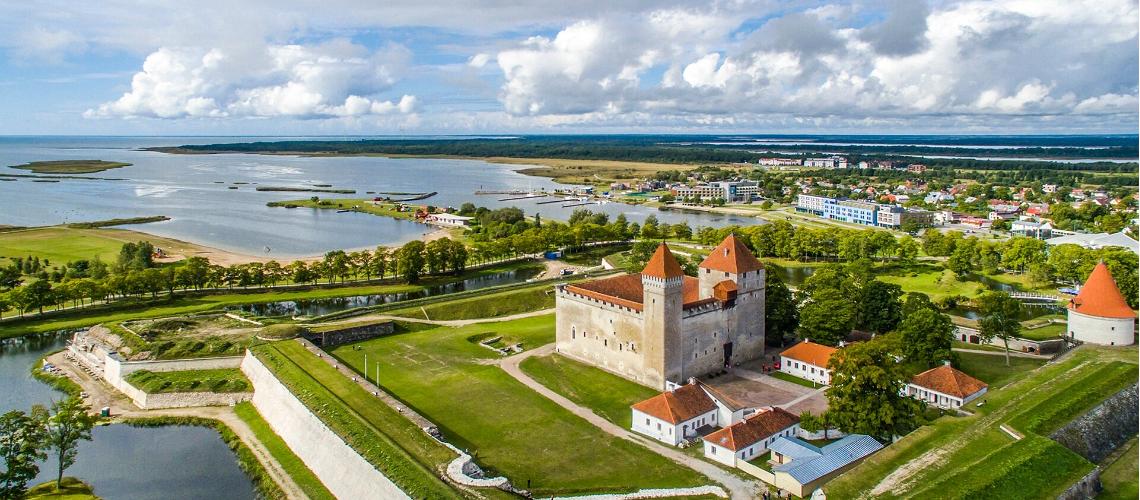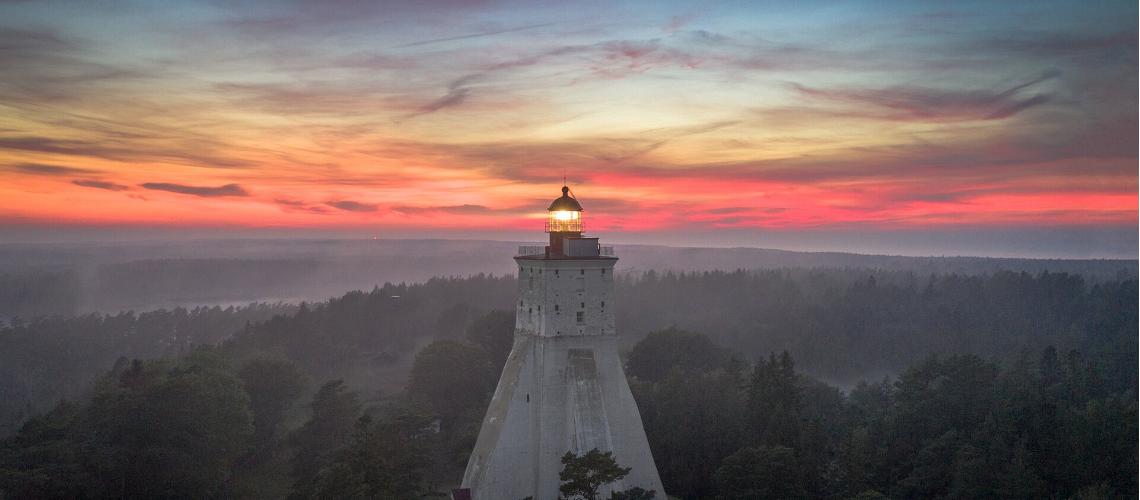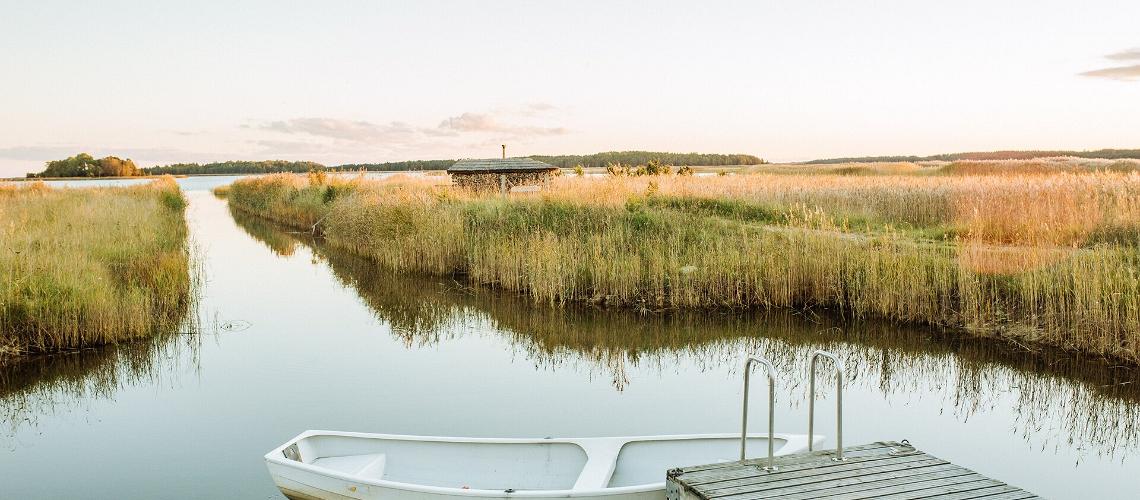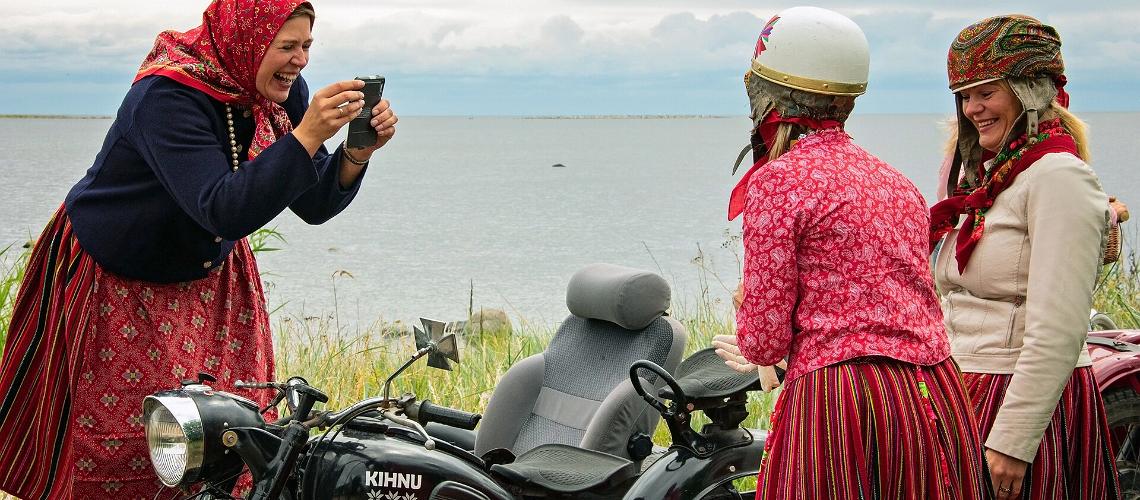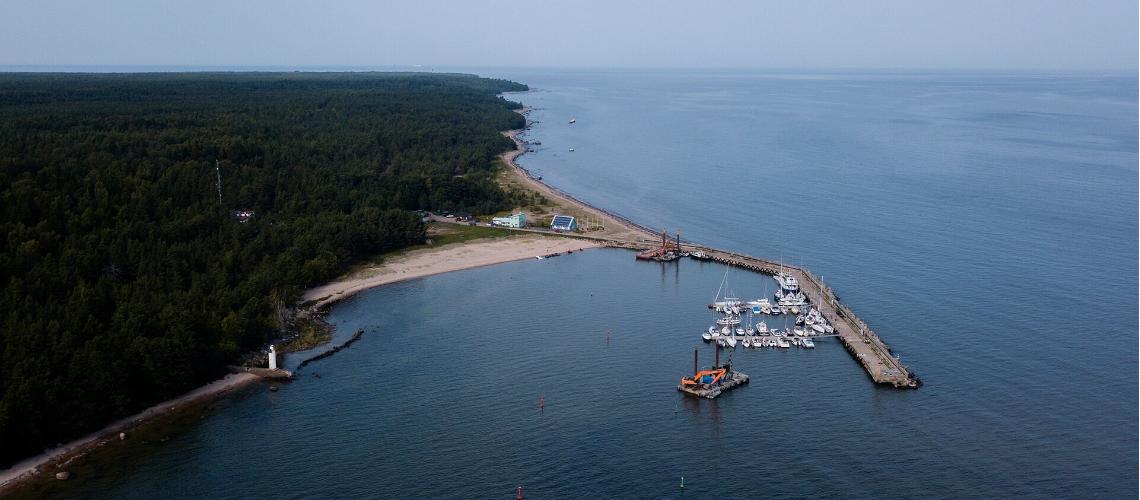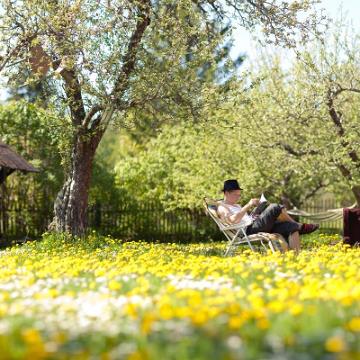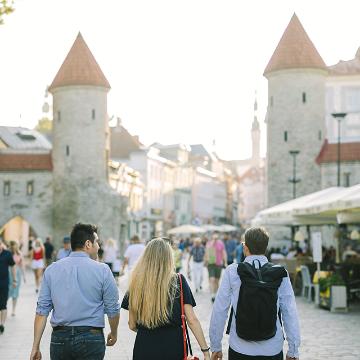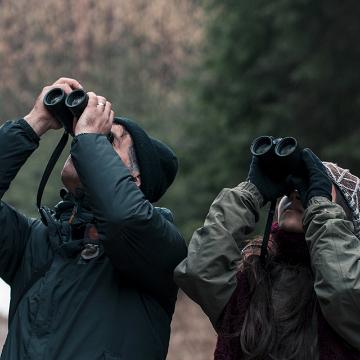21.06.2022
For travellers looking for an alternative island-hopping holiday, Estonia should be next on the list. With 2,222 islands, this Baltic destination is perfect for visitors looking to enjoy the best of sea, scenery and ancient traditions. From the luxury wellness on Saaremaa, to the seafaring community of Kihnu, Estonia’s islands are perfect for exploring and relaxing this summer.
Regular ferries operate between the mainland and the larger islands, as well as connecting the islands. Alternatively, there are flights from Tallinn to both Saaremaa, and Hiiumaa, taking under 45 minutes.
Saaremaa Island
Estonia’s largest island is noted as a wellness destination. Nicknamed as “Spa”-remaa, the main town, Kuressaare, has one spa facility for every ten residents, making it one of the world’s most spa-dense destinations with venues ranging from medical spa treatments to family wellness centres. Saaremaa’s wellness offerings far exceed its many spas. Recognised on the 2020 Sustainable Top 100 Destinations list, the island is often visited for its geographic diversity and its natural beauty spots. Nature enthusiasts should explore the trails in Viidumäe Nature Reserve and Vilsanid National Park, with views of thousands of migrating birds and fields of wild orchids. For the best scenery, a walk around Panga Cliff, provides beautiful views of the island and the sea. Saaremaa is also home to the Orissaare football pitch, because of the presence of a large, and immovable oak tree in its centre. The tree is regarded fondly by locals as an “extra player” in football matches. For more information, please see here.
Hiiumaa Island
Favoured by Estonians, Hiiumaa is a year-round destination with a rural feel. A third of the size of Saaremaa, Hiumaa has a far more secluded feel, perfect for visitors wanting a more peaceful trip. The quieter coastline is popular with surfers, sailors, and swimmers, whilst foodies will enjoy the island’s growing culinary scene, centred around its excellent fish and seafood. Estonians often travel from the mainland to Hiiumaa in August for the Hiiumaa Café Days, a community-driven food festival. One of the island’s stand outs is the restaurant at the Roograhu Port, which is particularly celebrated for its creative dishes using seasonal fish. Like Saaremaa, Hiiumaa has also been recognised as a green destination, largely due to its efforts to restore the endangered European mink population. On Hiiumaa is the Kõpu Lighthouse,which dates back to 1504 and is known to be the oldest lighthouse in northern Europe and one of the oldest in the world. For more information, please see here.
Muhu Island
Located in the West Estonian archipelago of the Baltic Sea, Muhu is just a short ferry ride away from the mainland town of Virtsu and is connected by an ice road during the winter months. With a local population of under 2,000 people, this peaceful island is ideal for those looking for a tranquil retreat. For the ultimate relaxation experience, visitors can stay at the Pädaste Spa, which offers treatments that are based around the harmony and revitalization of the senses. The spa culture here is based on the centuries’ old Estonian herbal traditions, complemented by the unspoiled nature beauty of Muhu island. For the best views of the island, hike into the Uugu area and climb up to the Uugu Bluff to admire the surrounding sea. For more information, please see here.
Kihnu Island
The seventh-largest Estonian island, Kihnu, is an ancient island of seafarers and fishermen. Throughout centuries, the men of Kihnu have spent much of their time at sea, leaving the women as the keepers and carriers of the island’s heritage. Inhabited by a close-knit community of around 700 inhabitants, their culture is guided by their relationship to the ocean and is now recognised as part of the UNESCO Intangible Cultural Heritage List. Visitors can discover the local tradition by taking a trip to sea with a local fishing leader, watching how they govern their fishing trips. For those looking to explore the picturesque viewpoints of Kihnu, take a tour of the main villages on foot, bike or by road. A particular highlight is the views from the Pitkänä peninsula lighthouse across Kihnu, as well as the surrounding islands and Baltic Sea. For more information, please see here.
Tallinn’s islands
There are three major islands easily accessible from the coastal capital of Tallinn: Aegna, Naissaar, and Prangli. The boat trip to each takes between 30 and 60 minutes with regular departures during the summer from Tallinn to Aegna and Naissaar, and a year-round service to Prangli.
Aegna is a three-square-kilometre island, rich in flora and fauna. Thanks to its beautiful forests, the island is a pleasant place for day trips and hikes, while the sandy beaches on its northern shore are perfect for sunbathing and swimming. A fascinating attraction is the stone labyrinth in Eerikneeme, on the northern part of the island, which dates to the 12th century, by the Estonian Swedes who lived there. For more information, please see here.
Naissaar is in the Gulf of Finland and is the largest island in northern Estonia. It is located on an ancient shipping route, and its history is intertwined with maritime stories and traditions with the first records of a permanent settlement dating to the 15th century. Over the past 300 years, Naissaar has been used for military purposes, forcing the permanent population to leave the island on several occasions, and the military heritage remains evident. It is a popular island for visitors duing the summer months with beautiful sandy beaches, hiking trails and the Nargen musical festival. The island is covered by forest, where blueberries ripen in July and lingonberries in August and September. For more information, please see here.
Prangli, with a population of 171, is the only island in northern Estonia that has been permanently inhabited for more than 600 years by Swedes, Finns, and Estonians. Prangli has a very diverse range of habitats: in the rocky, western part of the island, there are coastal meadows with salt-loving vegetation; sandy swimming beaches are found on both the northern and southern shores, and a large part of the interior is covered with pine forest. Nearly 40 species of waterfowl live on the island and seals can often be seen in the spring. For more information, please see here.
Notable Summer Events
- 8th July - 10th July: The Kihnu Sea Party, a festival about life on the island of Kihnu. It is the biggest event on the Island and pays homage to Kinhu folklore, craftmanship and tradition.
- 14th July - 17th July: The I Land Sound festival will take place on Illiku Islet, in Saaremaa. It is a chance for guests and locals to unwind and enjoy some Estonian nature, art and music.
- 20th July - 24th July: Kuressaare Castle’s historic grounds host the Saaremaa Opera days. A special Opera House is erected for the occasion, housing up to 2,000 people who come to enjoy a variety of famous theatrical performances.









